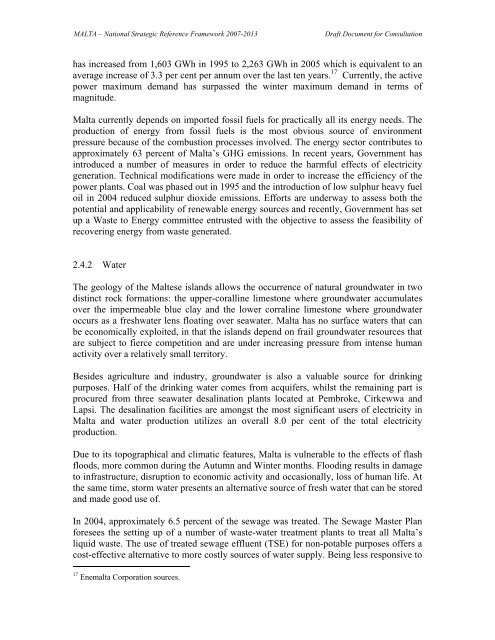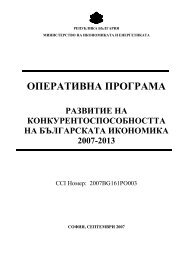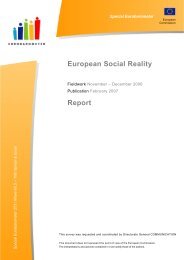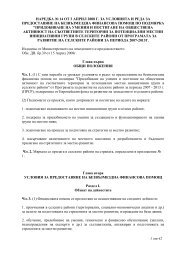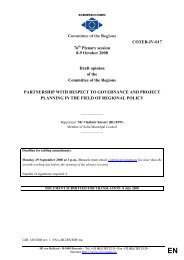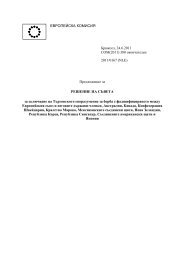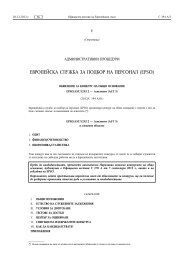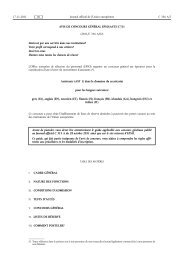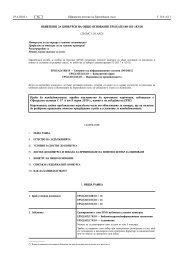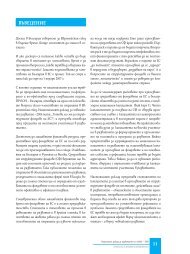National Strategic Reference Framework
National Strategic Reference Framework
National Strategic Reference Framework
Create successful ePaper yourself
Turn your PDF publications into a flip-book with our unique Google optimized e-Paper software.
MALTA – <strong>National</strong> <strong>Strategic</strong> <strong>Reference</strong> <strong>Framework</strong> 2007-2013 Draft Document for Consultation<br />
has increased from 1,603 GWh in 1995 to 2,263 GWh in 2005 which is equivalent to an<br />
average increase of 3.3 per cent per annum over the last ten years. 17 Currently, the active<br />
power maximum demand has surpassed the winter maximum demand in terms of<br />
magnitude.<br />
Malta currently depends on imported fossil fuels for practically all its energy needs. The<br />
production of energy from fossil fuels is the most obvious source of environment<br />
pressure because of the combustion processes involved. The energy sector contributes to<br />
approximately 63 percent of Malta’s GHG emissions. In recent years, Government has<br />
introduced a number of measures in order to reduce the harmful effects of electricity<br />
generation. Technical modifications were made in order to increase the efficiency of the<br />
power plants. Coal was phased out in 1995 and the introduction of low sulphur heavy fuel<br />
oil in 2004 reduced sulphur dioxide emissions. Efforts are underway to assess both the<br />
potential and applicability of renewable energy sources and recently, Government has set<br />
up a Waste to Energy committee entrusted with the objective to assess the feasibility of<br />
recovering energy from waste generated.<br />
2.4.2 Water<br />
The geology of the Maltese islands allows the occurrence of natural groundwater in two<br />
distinct rock formations: the upper-coralline limestone where groundwater accumulates<br />
over the impermeable blue clay and the lower corraline limestone where groundwater<br />
occurs as a freshwater lens floating over seawater. Malta has no surface waters that can<br />
be economically exploited, in that the islands depend on frail groundwater resources that<br />
are subject to fierce competition and are under increasing pressure from intense human<br />
activity over a relatively small territory.<br />
Besides agriculture and industry, groundwater is also a valuable source for drinking<br />
purposes. Half of the drinking water comes from acquifers, whilst the remaining part is<br />
procured from three seawater desalination plants located at Pembroke, Cirkewwa and<br />
Lapsi. The desalination facilities are amongst the most significant users of electricity in<br />
Malta and water production utilizes an overall 8.0 per cent of the total electricity<br />
production.<br />
Due to its topographical and climatic features, Malta is vulnerable to the effects of flash<br />
floods, more common during the Autumn and Winter months. Flooding results in damage<br />
to infrastructure, disruption to economic activity and occasionally, loss of human life. At<br />
the same time, storm water presents an alternative source of fresh water that can be stored<br />
and made good use of.<br />
In 2004, approximately 6.5 percent of the sewage was treated. The Sewage Master Plan<br />
foresees the setting up of a number of waste-water treatment plants to treat all Malta’s<br />
liquid waste. The use of treated sewage effluent (TSE) for non-potable purposes offers a<br />
cost-effective alternative to more costly sources of water supply. Being less responsive to<br />
17 Enemalta Corporation sources.


